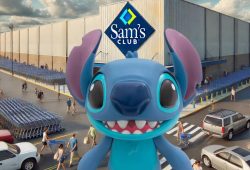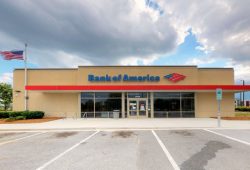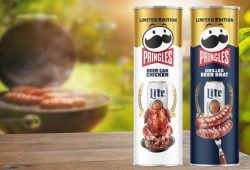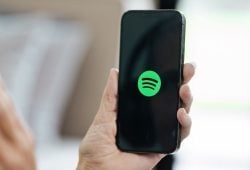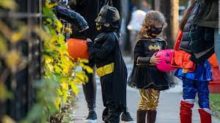 Despite inflation, this year’s predicted trick-or-treating participation will reach pre-pandemic levels, according to the National Retail Federation projections. Consumers want to spend, on average, $100 on costumes, candy, decorations, and other things. Total Halloween spending is anticipated to reach a record $10.6 billion, including $710 million for pets.
Despite inflation, this year’s predicted trick-or-treating participation will reach pre-pandemic levels, according to the National Retail Federation projections. Consumers want to spend, on average, $100 on costumes, candy, decorations, and other things. Total Halloween spending is anticipated to reach a record $10.6 billion, including $710 million for pets.
The Federation reported on Monday that 69% of shoppers are likely to celebrate Halloween this year compared to 68% in 2019.
The most popular costumes in 2022, according to a survey of more than 8,000 people, will be the traditional ones: a witch and a vampire for adults, Spider-Man and a princess for children, and a hot dog and a pumpkin for pets. But the most widely used source of inspiration is still online memes.
The role of social media on Halloween spending
Phil Rist, senior vice president of strategy at Prosper Insights, which performed the NRF’s 2022 poll, said, “Social media is playing an increasingly critical role in customer behavior, and Halloween is no exception.” This year, younger shoppers, especially those under 25, will turn to websites like Instagram and TikTok for costume ideas.
In a prior analysis, Deloitte predicted that rising prices would make Christmas shopping less popular from November through December than it was the year before. However, the NRF survey found that nearly half of the respondents had already begun stocking up for Halloween. Of those, 40% shop at bargain stores, 36% go to specialty shops, and 31% use online retailers.
Costumes will constitute the Highest Spending this Halloween
More than 2.2 million kids plan to buy Spiderman costumes, making it the most popular choice among kids’ costumes. This year, 1.9 million children are interested in princess costumes, while 1.6 million and 1.3 million people will prefer traditional witch and ghost outfits. Pirates, vampires, zombies, Batman, and Superman, are a few more costumes for popular kids.
5.3 million adults who want to buy costumes responded that they are most likely to be witches. 1.7 million chose vampires as their costumes of choice, while 1.5 million said they would dress as a ghost. Adults frequently choose Dracula, Spider-Man, Catwoman, and Batman.
According to NRF, 67% of consumers plan to give out candy to trick-or-treaters. According to the survey, 47% of respondents dress up in costumes, and 44% intend to carve pumpkins. A third of respondents indicated they would go to a Halloween party, and 20% said they would dress up their pet. More than half of respondents said they would buy new decorations and redecorate their house or yard.
Spending on other tick-or-treat items
Consumers should expect to pay more this Halloween for trick-or-treat pumpkins and candy. According to marketing research company Statista, the national average price of pumpkins varied slightly over the previous four Halloween seasons. Last year, a pumpkin’s average price was $4.83, up from $4.18 in 2020 to $4.04 in 2019. Pumpkins cost $3.89 each in 2018.
Early September data from the U.S. Department of Agriculture shows that this year’s pumpkin prices average $1.38 per pound. For carving, a 10- to 14-pound pumpkin might cost between $14 and $20 for each. This week, more small pumpkins are offered for $5 to $7 at shops around Northwest Arkansas.
According to a new survey from Advantage Solutions, consumers intend to spend more than $25 on Halloween candy this year, according to a recent study from Advantage Solutions, with 10% stating they will spend more than $50. The report also says, 45% of candy consumers will make their purchases a week or fewer before Halloween, and 16% will do so three days before the celebration.
The price of Candy will determine purchases
According to 37% of the respondents, the most important consideration for customers when buying Halloween candy is price. The survey showed that 22% of respondents’ choice of candy determined their purchases, while 14% said they would stick with a specific brand. Almost 90% of those who give sweets have plans to buy chocolate.
In recent years, the price of sugar, nuts, dairy, and imported cocoa has increased, and the sheer volume of candy sales at this time of year also pushes costs up. According to the Bureau of Labor Statistics, candy prices increased 2% from July to August and are now 12.7% more expensive than they were a year ago.
Reese’s Peanut Butter Cups, Jolly Ranchers, KitKat, Hershey, and more than a dozen more candy brands were among those which raised prices by 14% in June due to higher cocoa and sugar prices. Mars Chocolate, the company behind M&M’s and Snickers, increased the price of their candies by 7% in July to account for rising ingredient costs. In July, Nestle raised the price of sweets in the United States by 9.8%.
Additionally, consumers may notice that the big candy bags this year include lesser bars than in previous years. With shrinking container sizes, candy manufacturers have also experienced unprecedented inflation this year.
Halloween shoppers will begin their purchases once more, with 47% starting in September or earlier. Additionally, 36% of shoppers plan to visit specialty Halloween or costume stores, 40% shop online, and 40% travel to bargain retailers to get their goods.





